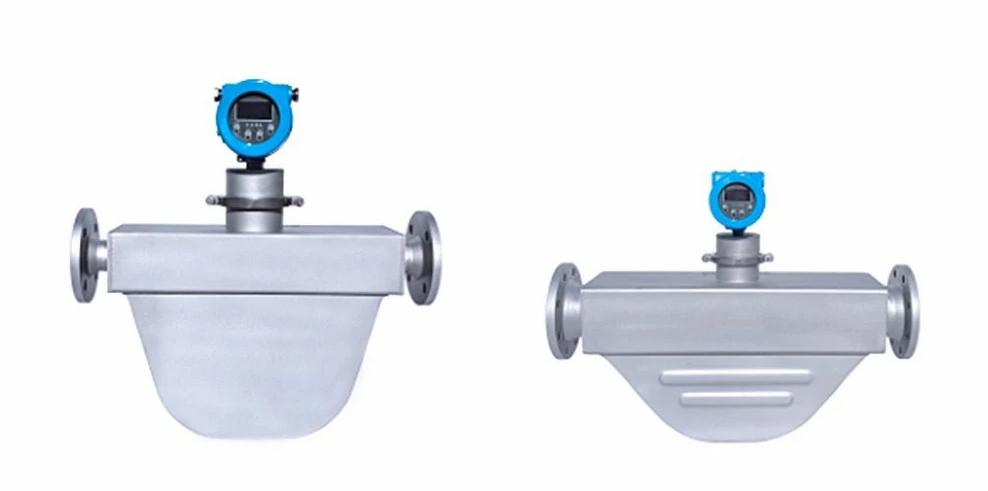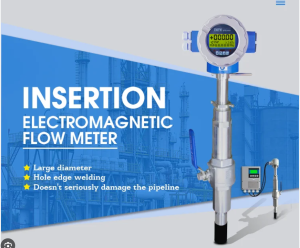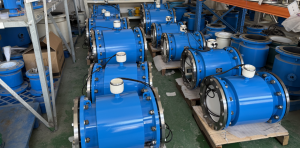In this comprehensive guide, we’ll break down what a Coriolis flow meter is, how it works, and why it’s favored by engineers across industries. We’ll also compare it to other flow meter types and offer insights into its pros and cons.
What Is a Coriolis Flow Meter?
A Coriolis flow meter is a direct mass flow measuring device. Unlike most other flow meters that infer mass flow by measuring volume and factoring in density, Coriolis meters measure mass flow directly—which makes them highly accurate and less affected by changes in fluid characteristics.

Coriolis meters are widely recognized as the most precise type of flow meters available, often achieving accuracy levels of ±0.1% or better.
The Principle Behind Coriolis Flow Meters
The Coriolis flow meter works based on the Coriolis effect—a physical phenomenon first described by French scientist Gaspard-Gustave de Coriolis in 1835. The principle is quite fascinating.
Here’s the core idea:
When fluid flows through a vibrating tube, the inertia of the moving mass causes a measurable phase shift or twist in the tube due to the Coriolis force.
How Does a Coriolis Flow Meter Work?
Let’s break the operation down step-by-step:
Step 1: Flow Tube Vibration
The meter contains one or two U-shaped or straight tubes that vibrate at a natural frequency using a drive coil.
Step 2: Fluid Enters the Tubes
As fluid enters and flows through the vibrating tubes, the Coriolis effect causes the tubes to twist slightly.
Step 3: Phase Shift Detection
Sensors placed at specific points along the tubes detect the timing difference (phase shift) between the inlet and outlet vibration.
Step 4: Mass Flow Calculation
The greater the mass flow, the more pronounced the twist. The meter’s electronics interpret the phase shift and convert it into a precise mass flow reading.
Step 5: Optional Density and Temperature Measurement
Many Coriolis meters also include sensors to measure fluid density (by analyzing frequency shifts) and temperature, making them multi-variable instruments.
Key Components of a Coriolis Flow Meter
Here are the main parts that make up a Coriolis flow meter:
-
Flow tubes: Where the fluid passes and vibration occurs.
-
Drive coil: Induces tube vibration.
-
Pickoff sensors: Detect vibration timing differences.
-
Transmitter: Processes the signals and calculates flow, density, and temperature.
-
Mounting and housing: Often built to withstand high pressure or hazardous conditions.
Applications of Coriolis Flow Meters
Thanks to their versatility, Coriolis flow meters are used in a wide range of industries:
-
Oil & Gas: Custody transfer, batching, and blending.
-
Food & Beverage: Dairy, juices, syrups, and fermentation.
-
Pharmaceuticals: Precision dosing and formulation.
-
Chemical: Hazardous fluid handling and chemical injection.
-
Water & Wastewater: Sludge measurement and dosing.
Their ability to handle multiphase fluids, slurries, and non-Newtonian fluids makes them ideal for challenging environments.
Advantages of Coriolis Flow Meters
Coriolis flow meters offer a range of benefits that make them a top choice for critical applications:
✅ Direct Mass Flow Measurement
No need to infer from volume and density—this improves accuracy dramatically.
✅ High Accuracy and Repeatability
Ideal for applications requiring tight process control and regulatory compliance.
✅ Multivariable Capabilities
They can measure mass flow, density, and temperature simultaneously.
✅ Insensitive to Fluid Properties
Changes in viscosity, pressure, temperature, or flow profile have minimal impact.
✅ No Moving Parts
Reduces maintenance needs and increases lifespan.
✅ Bidirectional Measurement
Can measure flow in both directions without recalibration.
Disadvantages of Coriolis Flow Meters
Despite their many strengths, Coriolis flow meters aren’t perfect for every application.
❌ High Initial Cost
They tend to be more expensive upfront than other flow meter types.
❌ Sensitivity to Vibration
External vibrations from nearby machinery can affect accuracy if not properly mounted.
❌ Pressure Drop
Some designs (especially those with curved tubes) create more resistance in the pipeline.
❌ Size Limitations
Large-diameter meters are bulkier and more expensive.
Coriolis vs Other Flow Meter Technologies
Let’s compare the Coriolis flow meter to some common alternatives:
| Feature | Coriolis | Electromagnetic | Turbine | Ultrasonic |
|---|---|---|---|---|
| Measures Mass Flow | ✅ Yes | ❌ No | ❌ No | ❌ No |
| Accuracy | ⭐⭐⭐⭐⭐ | ⭐⭐⭐⭐ | ⭐⭐⭐ | ⭐⭐⭐⭐ |
| Moving Parts | ❌ No | ❌ No | ✅ Yes | ❌ No |
| Multivariable Output | ✅ Yes | ❌ No | ❌ No | ✅ Some Models |
| Cost | 💰💰💰💰 | 💰💰 | 💰 | 💰💰💰 |
| Viscosity Sensitive | ❌ No | ❌ No | ✅ Yes | ❌ No |
Future Trends in Coriolis Flow Meter Technology
The future of Coriolis technology is exciting, with ongoing improvements such as:
-
Miniaturized sensors for portable and low-flow applications
-
Smart meters with IoT connectivity
-
Enhanced vibration compensation algorithms
-
Battery-powered and wireless models for remote installations
These innovations will continue to expand their usefulness across industries and improve ROI.
Conclusion
A Coriolis flow meter is more than just a measurement tool—it’s a powerful asset for any process requiring high accuracy, reliability, and versatility. By measuring mass flow directly and providing multivariable outputs, it surpasses many traditional technologies in both performance and precision.
While the initial investment may be higher, the long-term benefits in process efficiency, maintenance savings, and data accuracy make Coriolis meters a smart choice for modern industry.
Whether you’re designing a new system or upgrading an existing one, understanding how Coriolis flow meters work can help you make an informed decision that enhances performance and reduces operational risk.
Ready to implement a Coriolis flow meter in your operation? With their unmatched precision and robust design, you’ll be making a move toward more reliable and efficient fluid management.
We are a manufacturer of automatic flow meters with many years of experience in the industry. We have strong independent research and development capabilities and are a leader in the flow meter industry. Our main products include electromagnetic flow meters, vortex flow meters, turbine flow meters, ultrasonic flow meters, Coriolis flow meters, various solenoid valves, level meters, control units and valves, etc. Welcome to purchase –Best Instrument




